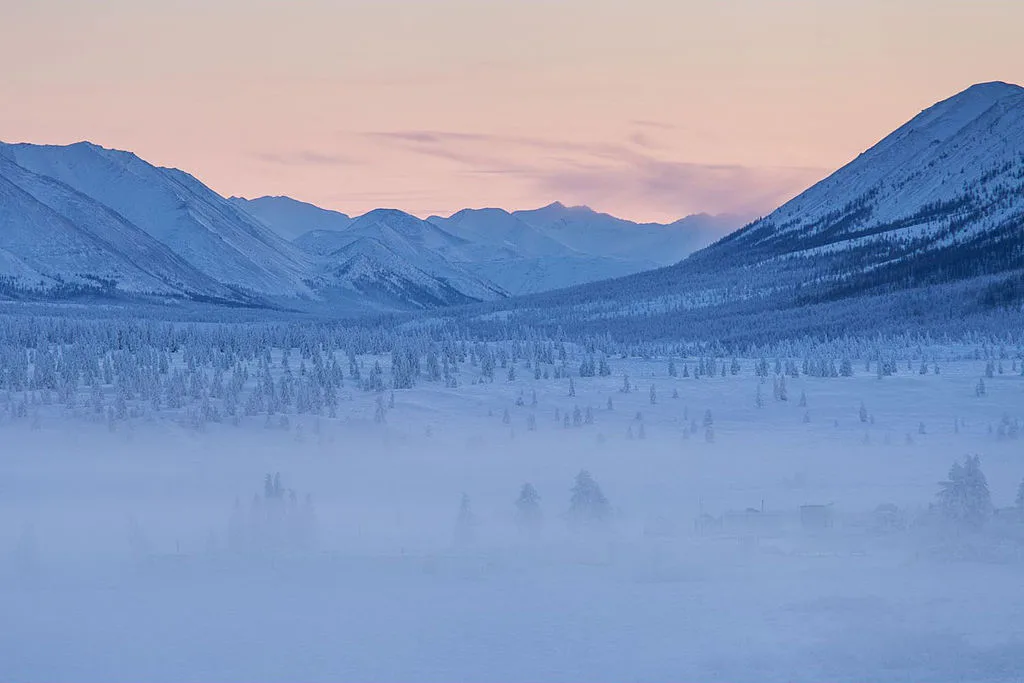
The seven coldest temperatures ever recorded on Earth
It may be cold comfort, but the next time you're in an extreme cold warning, keep things in perspective by thinking of these seven frigid locations.
Yes, we know. Canada is a cold country.
Arguably the coldest, in terms of average temperature, so we really shouldn't be surprised when the temperatures plummet to -30°C or below, as will happen somewhere in our country this winter.
And there are some Canadian cities that go weeks and weeks without temperatures coming anywhere near zero.
WATCH BELOW: MAGICAL BUBBLES FREEZE INSTANTLY IN MANITOBA'S -32°C TEMPERATURES
We looked into it, and even with Canada's usual suite of frigid winter weather just on the horizon, the seven cold-temperature records below are in no danger of being broken.
PROSPECT CREEK, ALASKA
The United States’ all-time record lowest temperature is about where you’d expect it to be: Alaska, the now mostly-abandoned settlement of Prospect Creek, where it got down to -62.2°C one fine January morning in 1971.
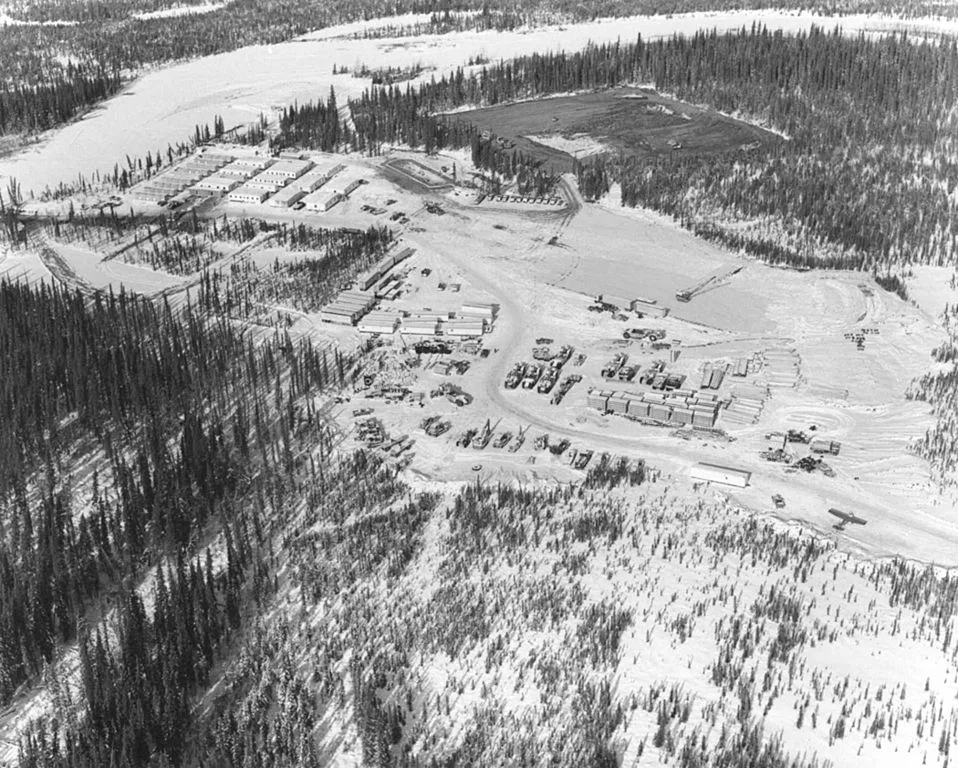
Image: Helipad construction, Prospect Creek, Alaska. Credit: Charles D. Evans, U.S. Fish and Wildlife Service/Wikimedia Commons.
At the time, it was host to workers building an oil pipeline, but they weren’t the only ones to suffer in Alaska that day. Cold air gripped almost all of the state, such that Fairbanks, one of the Alaska's largest cities, suffered from major ice fog.
The town’s newspaper reported a four-car pile-up as a result, and the record low at Prospect Creek dominated the front page alongside such minor newsmakers as Vietnam and Charles Manson.
And it came just a hair’s breadth away from surpassing the all-time record for the coldest day in mainland North America – set just a few kilometres away beyond Alaska’s eastern border.
SNAG, YUKON
Here’s Canada’s entry in the list, and it stands out not just as the coldest-ever temperature in the nation, but the coldest in North America (no, we’re not counting Greenland).
When the thermometer bottomed out at -62.8°C on February 3, 1947, in the Yukon outpost of Snag, it turned the handful of frozen inhabitants into minor celebrities, hounded by newspapers phoning in to ask what life is like in that kind of ridiculous extreme cold.
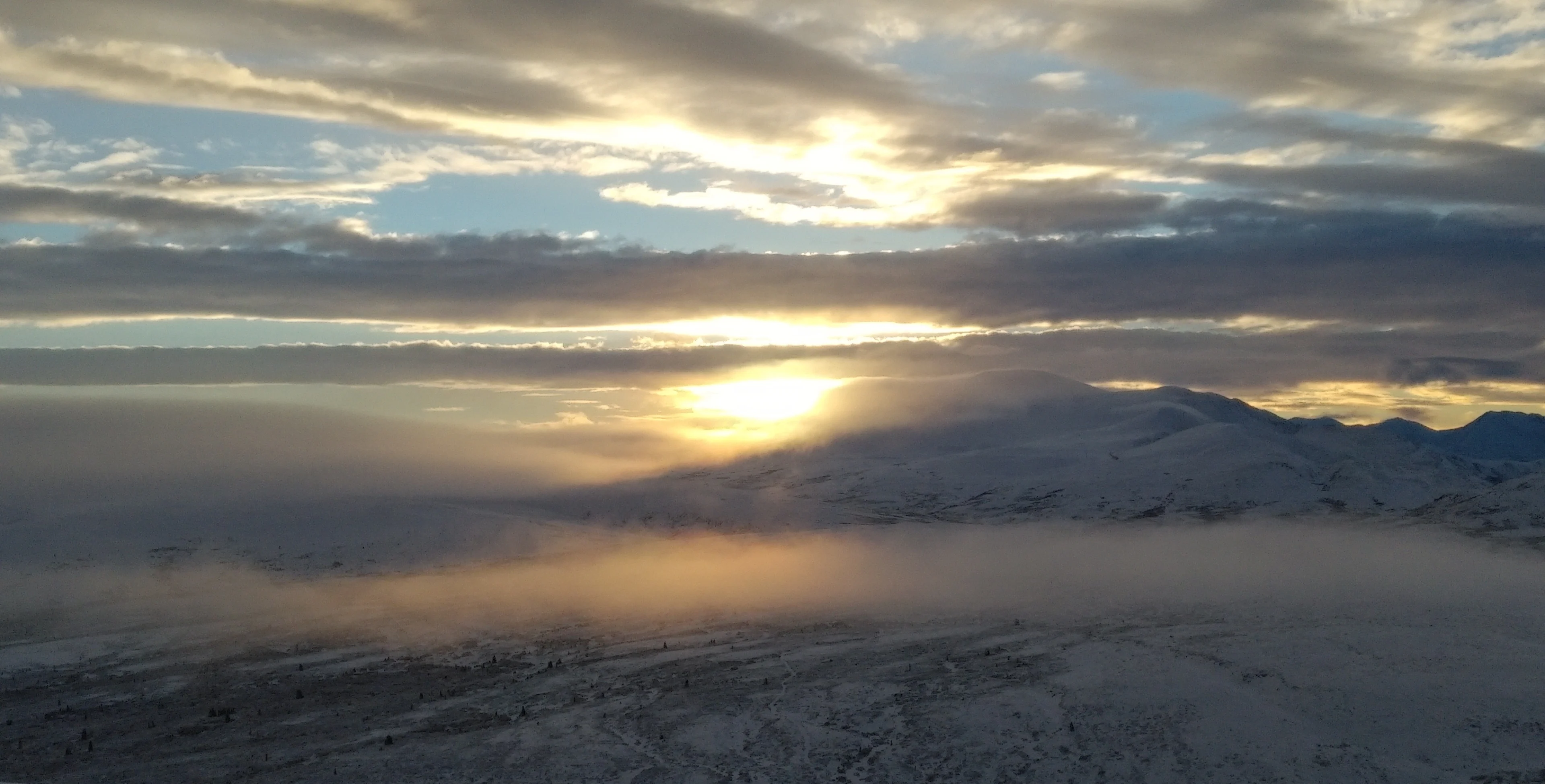
Image: Colin Young, Whitehorse, Yukon.
The joke was, the scientists couldn’t celebrate, since all the alcohol they had was frozen at the bottom of their thermometers, but it’s doubtful anyone actually IN Snag at the time thought it was funny.
Exposed skin would freeze within four minutes, people could hear dogs barking several kilometers away, and breath would linger in the air for several minutes, in long trails hundreds of metres long.
Lucky for the airmen, scientists and local inhabitants, it didn’t stay that cold. As the day wore on, temperatures climbed to a nice, comfy -48.9°C
YAKUTSK, RUSSIA
The Siberian city of Yakutsk calls itself the coldest in the world, and with good reason.
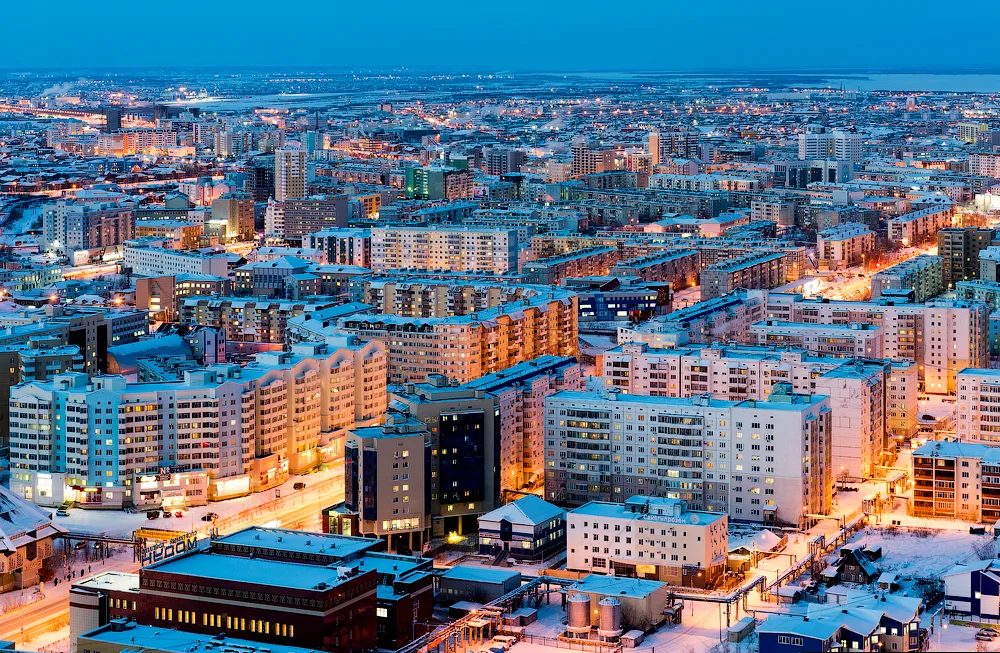
Image: Stepanov Slava/Wikimedia Commons.
It hit a low of -64.4°C in February 1891, but the truth is the average highs in the winter are rarely above -30°C.
But unlike anything else on this list, when we call Yakutsk a city, it’s not just courtesy. Rather than a remote outpost, it is a fully-developed metropolis, boasting a population of hundreds of thousands of people, along with universities, opera houses, even a zoo.
It’s the largest city built on permafrost, and the locals have adapted to the extreme conditions. Their homes are built on deep underground stilts, although construction workers have to stop work when it gets down to -50°C, when metal becomes too brittle to work with.
Apparently, the city's inhabitants have adapted to those conditions just fine, although the journalist who wrote this account of living there seems to have had a tougher time of it.
NORTHERN GREENLAND
The hardy souls of the British North Greenland Expedition in the 1950s recorded a temperature of -66.1°C at their base in northern Greenland, a home-ruled Danish territory that is technically a part of North America.

Image: Andrawaag/Wikimedia Commons.
The frozen island has a thriving population of more than 56,000 people, but they are mostly clustered into communities along the southern coasts, where summer temperatures can be quite comfortable.
Much of the north and interior is uninhabited, and buried beneath thick ice. As such, we know very little about it -- to the point where the ice sheet covers a massive canyon 750 km and more than 800 m deep in some places, and we didn’t even know about until a few years ago.
And the thing about that frigid temperature is, like others on this list, it’s the coldest OBSERVED in Greenland. It’s almost certain that there are colder places on the island, although scientists can be forgiven for not falling over themselves to slap on a parka and go hunting for them.
VERKHOYANSK AND OYMYAKON, RUSSIA
We’re sure the inhabitants of these two small Russian Siberian communities must be thrilled at being forced to share a spot on this list.
As it happens, when Verkhoyansk and Oymyakon (see the beautiful landscape shot below) reached record lows of -67.7°C (the former in 1892, the latter in 1933), they entered the history books for multiple reasons.
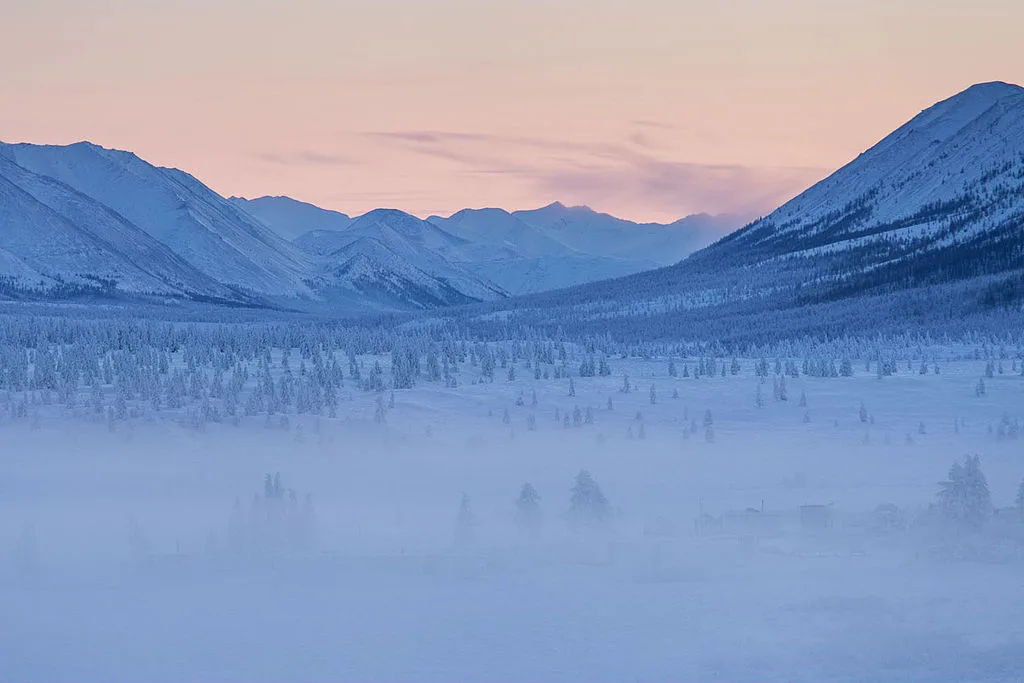
Image: Oymyakon forests. Maarten Takens/Wikimedia Commons.
Together, they are simultaneously the coldest places in Russia, Asia and the northern Hemisphere.
As well, the small towns are permanent settlements, and the coldest such in the world.
They also dual-wield the scepter of being the northern Pole of Cold (Verkhoyansk even built one as a monument, down below).
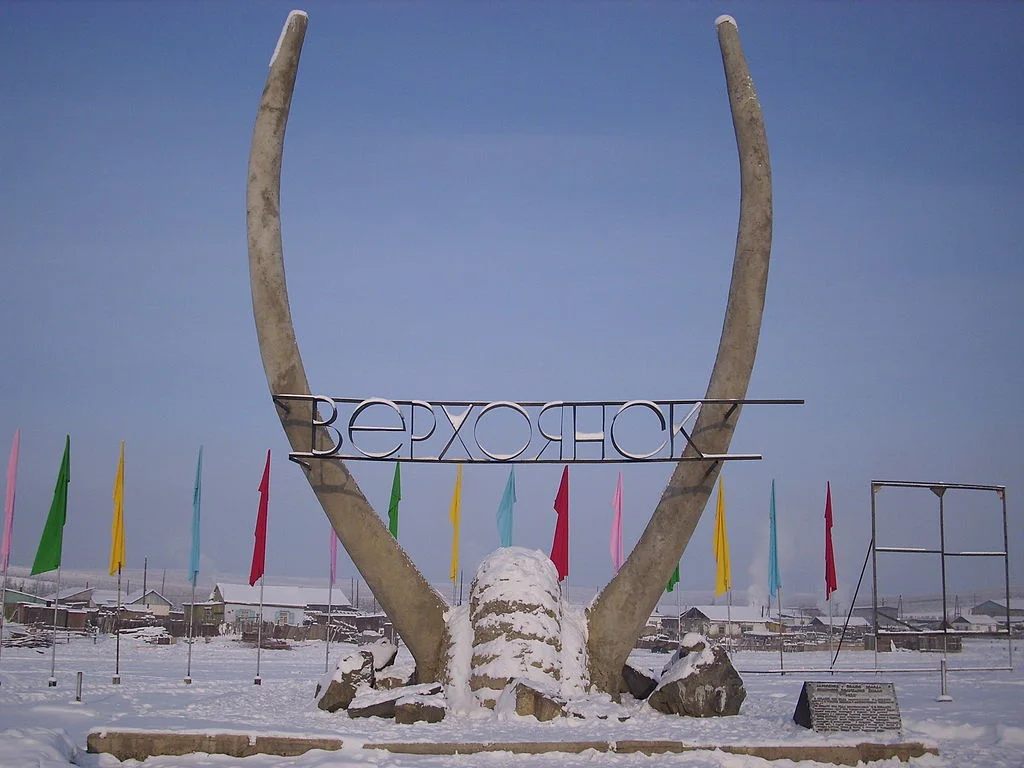
Image: Wikimedia Commons.
We can’t help but imagine the two towns locked in an enduring rivalry over who’s REALLY the coldest, with many a dagger-glare exchanged between citizens of either community passing each other on the backroads of the Siberian wastes.
VOSTOK STATION, ANTARCTICA
As we plunge deeper into the historic deep freeze, of course we find ourselves in Antarctica.
On July 21, 1983, Soviet researchers at Vostok Station in the continent's interior, well away from the climate effects of the sea, checked their instruments and found a reading of -89.2°C, almost one degree below the previous record set in 1960.
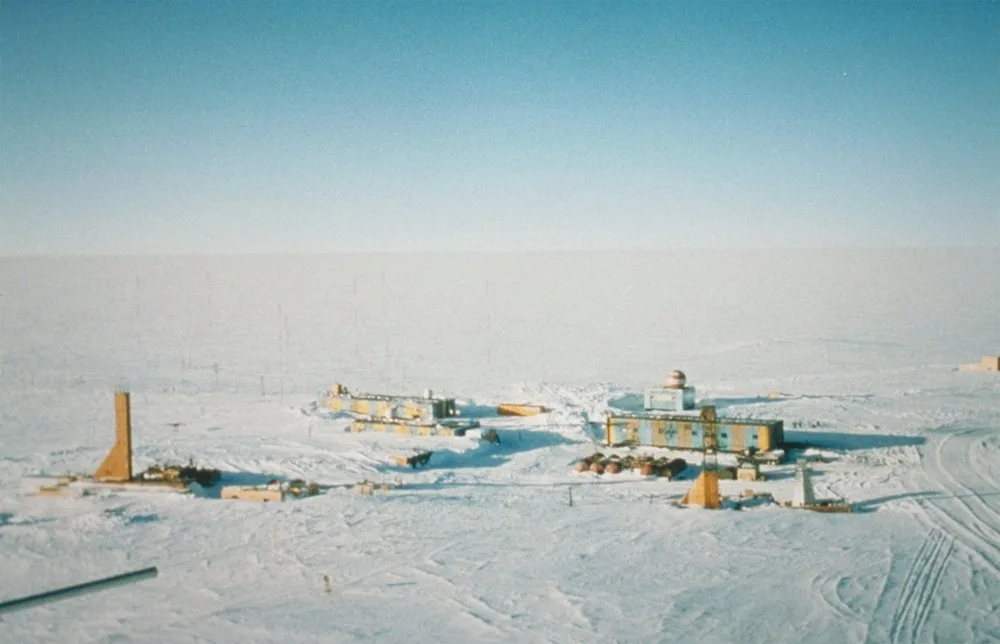
Image: NOAA/Wikimedia Commons
The researchers had plenty of time to see it coming. The temperature started dropping about 2.5 degrees per day from -75°C down to the new record, amid clear skies and light winds.
Adding insult to injury, the temperature rose sharply to around -66.7°C (break out the swim trunks, comrades!), but the comparative warm-up was accompanied by a blizzard.
We wonder what they’d have thought had they known the worst was yet to come…
EAST ANTARCTICA
It’s like the weather gods roused themselves to look at Vostok Station’s paltry record of -89.2°C long enough to scoff and say “know what? We can do better.”
The result? A new record of -94.7°C recorded in eastern Antarctica in August of 2010, but only reported last month. That’s more than five degrees colder than Vostok Station was.
As terribly cold as that is, you won’t find it in the Guinness Book of World Records – Apparently it doesn’t count, since it was measured using satellite data, not a regular thermometer (which we think is a dubious bar to entry ourselves).
So how does that kind of temperature affect the human body?
Well, the scientist who announced the findings says researchers at the South Pole occasionally amuse themselves by dashing naked through temperatures of -73°C, and he reckons people can survive for about three minutes in those conditions (how he knows the last bit is an interesting question).
Worth noting as well: When scientists are doing actual outdoor research in those conditions (as in, not streaking), they wear a breather than draws air into their suits through a sleeve, to be warmed by body heat before it reaches the lungs.












